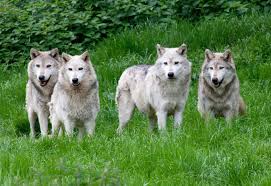The EU wants to lower protection for wolves. Why has the species rebound become a problem?

Wolves have made an impressive comeback in Europe in recent decades, but their presence has angered some farmers and led to a hostile backlash.
This week, the European Commission will make a decision about whether to weaken the legal protection of the European grey wolf.
If it goes ahead, it would mean a step further towards legalising the routine culling or hunting of the animals.
Farmers broadly back the proposal, as does President of the European Commission Ursula von der Leyen, whose own pony Dolly was killed by a wolf in 2022.
However, nature and conservation groups have denounced the lack of scientific evidence to support the proposal.
“The EU proposal to downgrade grey wolf protection across Europe has been based on a non-peer-reviewed single report, contracted out by the European Commission and lacks verified independent data,” environmental association Green Impact said in a statement.
Hundreds of scientists and academics are currently signing two scientific statements on wolf conservation and the role of wolves in ecosystem recovery, the group said.
So why has the matter become so controversial and will humans ever be able to peacefully coexist with wolves in Europe?
Rebound of grey wolf in Europe raises concerns
Usually, the return of a famous creature once driven to the brink of extinction would be a universal cause for celebration – particularly when it comes about, in part, through a conservation campaign backed by EU policy.
But this has not been the case for the return of the wolf in Europe.
It has become a polarising topic across the continent. Conservationists hail their impact on the environment and the ecological benefits. Farmers, however, are worried for their livestock in areas that haven’t had wolves in them for decades.
Humans led wolves to near-extinction last century
Wolves have a long history in Europe roaming across the continent for centuries.
But as they sometimes prey on livestock, they came into conflict with humans who started intensely hunting them as a result. This led to their extinction in many European countries by the mid-20th century, although stable populations remained in certain areas.
Since the 1970s attitudes towards large carnivores began changing and conservation efforts were made to revive failing populations. Today, numbers have boomed to around 19,000 in the EU, according to a report by the Large Carnivore Initiative for Europe, and wolves now live in every mainland EU member state.
The strength of this return is reflected by the International Union for Conservation of Nature’s Red List of Threatened Species which now lists the wolf in Europe as of least concern.
This spectacular comeback has been hailed by many environmentalists and conservationists who cite the benefits of wolves to ecosystems.
“Large predators, particularly apex predators, are one of our best allies to combat climate change, deforestation and biodiversity loss,” says Enrique Perez, the chairperson of the European Alliance for Wolf Conservation (EAWC). This platform of national NGOs from 15 countries advocates for more rigorous enforcement of wolf protections.
“So we shouldn’t have the perception that it’s a conflict or a problem, but it’s the opposite.”





